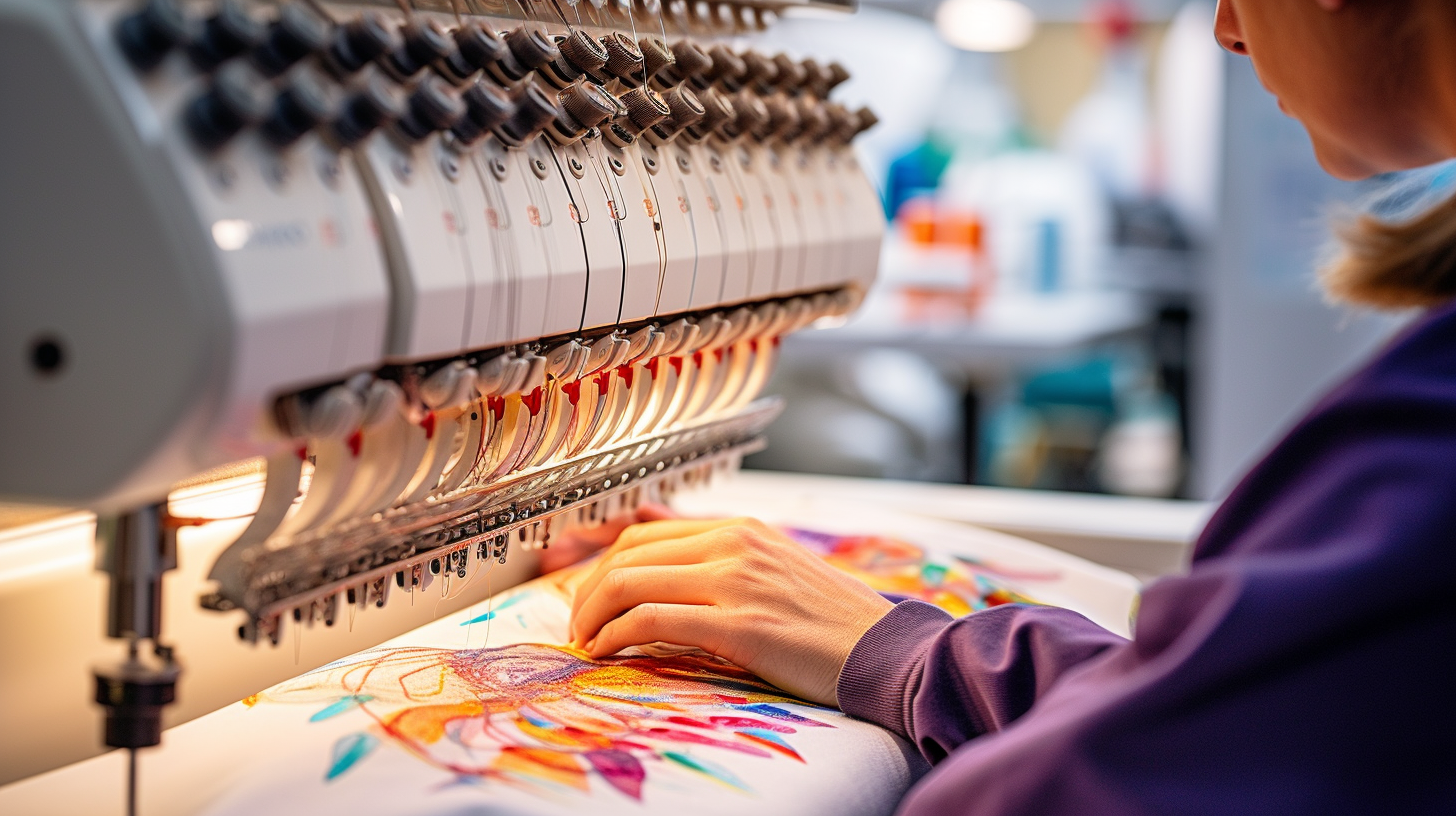Top Quality Digitizing for Embroidery: Professional Craftsmanship
Top Quality Digitizing for Embroidery: Professional Craftsmanship
Blog Article
Understanding the Needlework Digitizing Refine: Your Ultimate Overview
Embroidery digitizing is a meticulous craft that calls for precision and experience to equate elaborate layouts into digital formats for device needlework. As craftsmens start this journey to grasp the needlework digitizing process, a comprehensive understanding of the fundamentals establishes the foundation for quality. Past the rudimentary expertise exists a world of advanced software application, specialized devices, and nuanced techniques waiting to be discovered. By delving into the subtleties of digitizing, one can open a globe of creative possibilities and elevate their needlework jobs to brand-new heights.

Understanding Embroidery Digitizing Basics
Embroidery digitizing basics develop the foundation whereupon elaborate styles are translated right into machine-readable formats for accurate stitching. This initial action in the needlework digitizing process is important for guaranteeing that the last embroidered item is a faithful representation of the initial style. Understanding embroidery digitizing essentials involves understanding essential principles such as stitch types, stitch instructions, thickness, padding, and draw payment.
Sew kinds play an essential duty in figuring out the aesthetic and textural result of the stitched design. By choosing the suitable stitch type, whether it be satin, fill, or running stitch, digitizers can accomplish the wanted impact and boost the total high quality of the needlework. In addition, sew instructions influences the circulation and measurement of the style, while thickness figures out the spacing and coverage of the stitches.
In addition, rug sewing supplies stability to the design by securing the fabric and protecting against distortion throughout the needlework procedure. Pull settlement is an additional necessary factor to consider to combat the all-natural tendency of fabric to contract when stitched. Mastering these embroidery digitizing basics is essential for developing professional-quality embroidered products.
Picking the Right Digitizing Software
Picking the ideal digitizing software program is a vital decision that dramatically affects the performance and top quality of the embroidery digitizing procedure. Digitizing for Embroidery. When selecting the appropriate digitizing software application, it is necessary to take into consideration factors such as the complexity of layouts you intend to produce, the user-friendliness of the software program, the level of client assistance provided, and the compatibility with your embroidery maker
There are numerous digitizing software application options offered on the market, varying from fundamental programs for novices to advanced software program for expert digitizers. Some prominent choices include Wilcom EmbroideryStudio, Hatch Embroidery Software Application, and PulseID. These software use a wide variety of tools and features to aid you produce elaborate styles effortlessly.
Before deciding, it is recommended to check out the various software application alternatives via free tests or demonstrations to establish which one ideal suits your demands. Additionally, checking out evaluations and looking for referrals from knowledgeable digitizers can provide beneficial understandings right into the strengths and weaknesses of each software (Digitizing for Embroidery). By thoroughly reviewing your requirements and comparing the functions of various digitizing software program, you can make an educated option that enhances your needlework digitizing workflow
Digitizing Devices and Methods

Optimizing Design Settings for Needlework
Understanding the ins and outs of layout setups is basic in attaining optimal lead to the embroidery digitizing procedure, building upon the foundation laid by recognizing digitizing tools and techniques. When optimizing design settings for needlework, it is necessary to take into consideration variables such as stitch kind, density, rug, pull compensation, and enrollment. Sew kind selection impacts the general look of the layout, with alternatives like satin, fill, and running stitches offering different textures and results. Density refers to the spacing and density of stitches, affecting the layout's insurance coverage and longevity. Correct padding stitching gives stability and prevents fabric distortion, specifically for complicated layouts or on stretchy materials. Pull settlement readjusts for textile stretch during stitching, ensuring accurate layout duplication. Registration setups line navigate to this website up different components of the design properly, preserving total layout integrity. By fine-tuning these design setups, embroiderers can improve the high quality and precision of their embroidered developments.

Troubleshooting Common Digitizing Issues
When encountering typical digitizing problems throughout the embroidery process, it is essential to comprehend the source and implement effective services without delay. One usual issue is stitch thickness issues, where stitches might be as well dense, causing the material to pucker, or also sparse, leading to spaces in the style. Changing the stitch thickness settings in the digitizing find out this here software application can assist settle this concern.
An additional frequent challenge is thread breaks during the needlework procedure. This can take place due to various reasons such as incorrect tension settings, dull needles, or using low-grade thread. Ensuring correct maintenance of the needlework maker, including normal needle adjustments and tension adjustments, can reduce the event of thread breaks.
Furthermore, design enrollment errors can lead to misaligned elements within the embroidery layout. Examining the style positioning in the digitizing software program and making needed modifications before stitching can aid in avoiding this concern. By dealing with these typical digitizing problems promptly and successfully, you can make certain a smoother needlework procedure and high-grade ended up items.
Verdict
In final thought, understanding the needlework digitizing procedure requires a strong understanding of the fundamentals, the appropriate choice of software application, and understanding of devices and techniques. Enhancing style setups and repairing usual digitizing concerns are critical action in making certain high-quality needlework outcomes. By following these steps carefully, one can attain precision and performance in the my response digitizing procedure.
Report this page